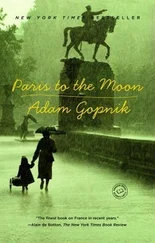I am, doubtless, prejudiced by particular experience. On my tenth birthday, I took the Moloznik boys from across the street to see a double feature of the first two James Bond films, this at a blissful time when the second run of movies in theaters was still a regular event, so that one had the pleasure of reseeing a good thing in the velvet padding of the cinema—not on the sofa, as we do now—with its thrilling moments in the dark: the trickle of sweet, forbidden Coke through a straw, and the chewy, burnt, semipainful edges of caramels. My parents were blackmailed into taking all three boys out to dinner at a Howard Johnson’s on, as I recall, City Line Avenue in Philadelphia.
Howard Johnson’s is gone now, reduced to a handful of sad motels. But in its day it had something grand about it. There was the electric sign outside, in green and orange, showing, in rapidly animated yet obviously distinct action—you could see the unlit armature of the next moment of movement waiting just beyond the neon figure that was lit, an endlessly repeating flip book of colored light—simple Simon and the Pieman enacting a brief drama of supplication and supply; one took eternally, the other fed over and over again, on the sign above City Line Avenue.
I sensed then that the sign, though meant as a come-on, was one of those strange, dense referents that used to be part of the pool of myths of ordinary people. Simon, as I recall, had the bent-kneed neediness of a Maxfield Parrish illustration, which, combined with the zigzagged lettering, made the sign, in retrospect, a kind of Saturday Evening Post cover come to life, or at least to electricity. (It was similar in spirit to, though far more pop in form than, the mural of Old King Cole in New York’s St. Regis Hotel, a stylized comment on a nursery rhyme assumed to be known to everyone.) The sign’s whimsical high voltage—the elaborate fable electrically enacted simply to signal “Eat!”—was conducted into the HoJo’s interior as well, where the color scheme of blue and orange seeped even onto the margins of the many-paged menu. Its dishes were familiar from the highway to New York: the rubbery fried clams, the 3-D burger, the mint-chip ice cream, minted with green food coloring. The burger that I had that evening had the delectable aroma, now vanished from the world, of the griddles of my childhood, something buttery, and of the soda fountain. The possibility of choice, the splendor of existence, was all present.
It was not the deliciousness of the food—my mother made better burgers—but the overcharge of optimism that made the meal matter. Its excellence involved the removal of the obvious signs of labor, which even then I took to be a benevolent fiction, for the better food at home was benign good fortune but effortful. You had to have my mom to eat really well, but anyone could come here and share. It was a moment of transformation, liftoff, of anonymity transmuted into intimacy without the obligation of gratitude: you told the menu-bearing woman at the cash register “Four for dinner,” and suddenly, inexplicably, you were in a booth, and there was dinner for four! This sense of being in the unimaginable right place with exactly the right company in the most welcoming of rooms attended by the most considerate of servers—whistling while they worked and candidly eyeing the reward—was a blessing felt there and sought ever since.
As museums cross, or so Updike tells us, with the mystique of women, restaurants cross in memory with the optimism of childhood, with birthdays, promises, quiet, and the guilty desires of childhood, too: special treatment, special favors. The Cardinal, who never arrives, who sweeps you up into his carriage saying, “Child, you please me,” becomes the maître d’ who says, “Ah, sir, we’re so glad to see you!” Some note of gaiety, of excess, of potential, lingers even at the most pedestrian lunch counter. (I have never looked at the Edward Hopper study of loneliness without thinking happily about how cozy the combination of diner chili and lemon meringue pie must be that late at night.)
Years went by—and here one must imagine calendar pages blowing and stock shots of jets crossing the Atlantic—and I found myself in Paris, just at a moment when the Grand Véfour had changed hands from Raymond Olivier’s to the great cook Guy Martin’s. Jet-lagged in the golden light of the Palais Royal, I recognized instantly the same sweet charge, the sibling resemblance to City Line Avenue and the Howard Johnson’s of my tenth birthday. The enameled nymphs and goddesses, the mirrors, the red velvet couches—it was, for all the Palais Royal sophistication, this resemblance that made it moving: the experience of overcharge, of more than was necessary, of décor and joy, and sobriety of eating. Both were places of possibility, the illusion of potentials: we shall be blessed, and know that we are.
Even purely “social” restaurants, where dramas of snobbery play out, can be turned to such pleasure. In my misspent editorial youth, I used to take two gifted, hard-drinking writers, Mordecai Richler and Wilfrid Sheed, to lunch once a month at the Four Seasons in the Seagram’s building. While Tina Brown and Helen Gurley Brown dined on water and lettuce, my two authors would let themselves go on shrimp with chipotle sausage, linguine alle vongole , crab cakes… and a bottle of red wine and a bottle of white (and too many Cognacs at the end; it was the last decade of hard-drinking writerliness, the last gasps of literary alcoholism that Sheed wrote about movingly and bravely in his In Love with Daylight ). While Anna and Helen and the rest sipped and barely munched, the maître d’ would wheel out a kind of chocolate bombe, for the express and sole purpose of having them squeal with indignant denial of interest. But the writers would demand a piece, and then another, with whipped cream (or “crème fraîche,” as the arc had bent again toward France).
The restaurant, whether in its most abstract, ritzy form or at its most elemental, can always be diverted back toward a primal magic, a mood of mischief, stolen pleasures, a retreat from the world, a boat on the ocean—years later, having ice cream aboard a cruise ship in a storm, I would find that sense of stolen kisses, of clandestine joy, instantaneously renewed. That is what the restaurant promises, and how its prosaic purpose—cooked food exchanged for money—passes into the poetic, which explains why when the young man, from Balzac to Scott Fitzgerald, comes to the city, the first thing he seeks out is the place to eat that he has read about.
Who invented the restaurant? How did it begin? How did it happen that the long history of paying for food in a setting so singular became such a resilient institution—so resilient that a single restaurant, like Gundel in Budapest, could survive wars and revolutions, communists and the new economy, only to end much as it began? How did restaurants happen, and why did they happen first, or best, in Paris?
Until recently, most cooking history was pop history, filled with canned “Eureka!” moments and arch legend-making. (“The great chef Dunand found himself after the battle with nothing but crayfish, chicken, some eggs, and a couple of tomatoes. What, he wondered, could he make from such a motley assortment of ingredients? A moment’s thought, a minute’s chopping, and an hour later, on the Emperor’s table, chicken Marengo was born,” etc.) The birth of the restaurant had its myth-made tang, too. The old, potent, and long-standing story was that it was the French Revolution that had made the restaurant: After the revolution, the cooks of the French aristocrats were out of work, since they no longer had any mouths to feed. With nowhere to go but the streets, they opened cafés and started selling in public what before you could get only in private. Willy-nilly, the modern restaurant came into existence. A little later, a few high chefs, the great pastry architect Antonin Carême among them, made up a “grammar” of French cooking; that is, they wrote down recipes. Together, the dining room on the street and the recipe book in the kitchen made a new place. The aristocrats lost their heads; their cooks lost their jobs and found a new way to make a living in a democratic world.
Читать дальше












